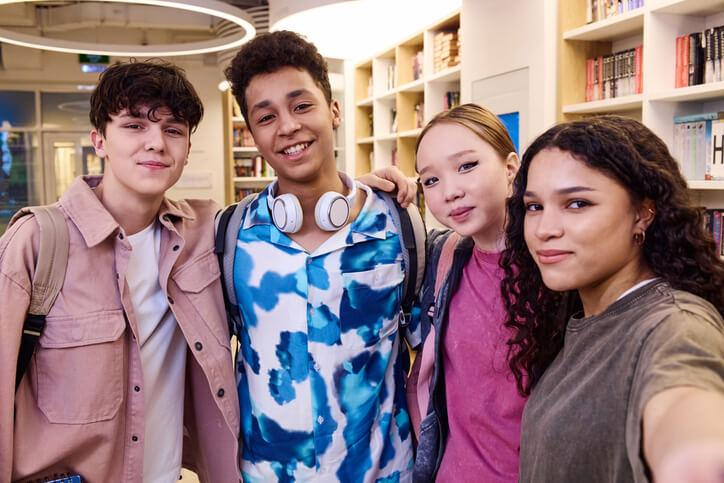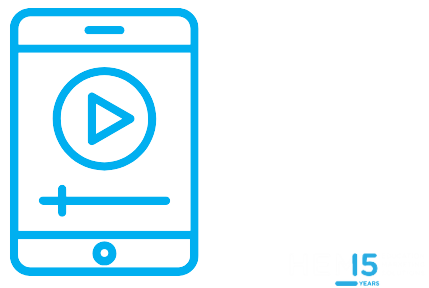The next wave of college applicants is almost here. Generation Alpha, born roughly between 2010 and 2024, will begin entering higher education by the end of this decade. They are the first cohort born entirely in the 21st century, carrying the name “Alpha” to mark a new beginning. With a global population now estimated above two billion, Gen Alpha is among the largest cohorts on record.
Raised primarily by Millennials, this generation is growing up in households that are more diverse, globally minded, and digitally connected than any that came before. Their worldview is shaped not just by rapid technological change but also by formative events such as the COVID-19 pandemic. For higher education, this means a fresh set of expectations around how, where, and why learning happens.
By 2028, the first wave of Gen Alpha, those born in 2010, will be setting foot on college campuses. They will arrive as the most technologically fluent and digitally empowered students to date, bringing with them new definitions of access, engagement, and community. Institutions that understand who they are and prepare now to meet their needs will be best positioned to thrive in the coming years.
In this article, we’ll explore ten key insights about Generation Alpha: their learning preferences, values, and challenges, as well as what higher education can do to connect with them meaningfully. Let’s dive in.
1. Gen Alpha Is the First Fully 21st-Century Generation
Every generation reflects the world it grows up in, and for Gen Alpha, that world is fully digital. Born after 2010, the same year the iPad and Instagram launched, they have never known life without smartphones, apps, and social media. Social researcher Mark McCrindle coined “Generation Alpha” to signal a true reset, not a return to the alphabet cycle, but the beginning of something entirely new.
This generation is also massive. With millions of births each week, particularly in countries like India, China, Indonesia, and Nigeria, Gen Alpha is on track to be one of the largest cohorts on record. They’re also growing up in more diverse societies; in the United States, Gen Alpha will be among the most ethnically diverse cohorts.
What is the education of the Alpha Generation like? Generation Alpha’s educational experience has been distinct. They’ve grown up with personal technology from day one, many using tablets in preschool, and experienced hybrid or remote learning early due to COVID. Generation Alpha education is more personalized and tech-infused than past generations. Gen Alpha students often use online resources (YouTube, learning apps, even AI tools) alongside formal schooling. Going forward, they are expected to pursue higher levels of education than prior cohorts, with global tertiary enrolment continuing to rise.
For higher education, the implications are clear: campuses will need to serve a digital-first, globally minded, and highly pluralistic student body unlike any before.
Example: Cal Poly’s Diverse Incoming Classes: In recent years, universities have reported that each incoming class is breaking diversity records – reflecting Gen Alpha’s unprecedented pluralism. For instance, California Polytechnic State University announced that its 2022 freshman cohort was “the most diverse in the university’s history,” marking the fifth consecutive year of record diversity. Cal Poly noted all-time highs in enrolment of Hispanic/Latino, Asian, first-generation, and low-income students, crediting “intentional and strategic work to make [the campus] more reflective of the diversity of our state”.

Source: Cal Poly
2. True Digital Natives: Tech Is in Their DNA
If Gen Z grew up tech-savvy, Gen Alpha takes it further. They are the first generation to experience constant digital immersion from birth. Many had access to tablets before they could walk, and by around age 11, most already have a mobile phone. For them, Wi-Fi, apps, and streaming are simply part of daily life, not innovations.
This early and seamless exposure has made them fluent in digital environments. They learn to swipe before they can write, widely use YouTube, and gravitate toward short, visual, and interactive content on platforms like TikTok. Traditional, text-heavy approaches hold less appeal, and educators already note a growing preference for summaries over long-form reading.
What is the learning style of Gen Alpha? Gen Alpha students tend to be visual, interactive learners who are comfortable multitasking in digital environments. They often prefer short-form content and videos (having grown up on platforms like YouTube and TikTok) and learn well through gamification and hands-on exploration.
For higher education, this dual reality signals both opportunity and challenge. Gen Alpha will thrive in tech-enabled classrooms and adapt quickly to digital tools, but only if institutions deliver engaging, mobile-first, and frictionless experiences that match their expectations.
Example, 1:1 Device Programs for Digital Learning: Schools and colleges are increasingly providing personal devices to ensure Gen Alpha learners have constant access to online tools and content. Bowdoin College (USA) launched a Digital Excellence Commitment that equips every student with a 13-inch MacBook Pro, an iPad mini, and an Apple Pencil, plus required course software, regardless of financial need.. Initially begun during the pandemic to facilitate remote learning, Bowdoin’s program became permanent in 2022 after faculty saw how a common device platform spurred “numerous and unexpected learning and teaching innovations”.

Source: Bowdoin College
3. Childhood in the COVID Era: Resilient but Impacted
Generation Alpha’s early years were shaped profoundly by COVID-19. The oldest were around 9 or 10 during the 2020 lockdowns, old enough to remember school closures, Zoom classrooms, and virtual birthdays. Some have even been nicknamed “Generation Covid,” underscoring how deeply the pandemic disrupted their formative experiences.
Yet these disruptions also bred resilience. Gen Alpha grew up watching their parents work remotely, mastering online learning platforms early on, and staying connected via FaceTime and Zoom. They learned early that the world is interconnected, a virus spreading globally, or friendships forming online, taught them how actions ripple across borders. Educators note that this has made many students flexible and globally aware.
Example, Virtual Global Exchanges Maintain Connection: Example, Virtual Global Exchanges Maintain Connection: When COVID-19 shuttered travel and classrooms, Penn State University’s College of Education used Experiential Digital Global Engagement (EDGE) to run virtual exchange classes with partners in countries such as Ecuador and Japan. American and Ecuadorian teacher trainees were paired as one-on-one “buddies” for weekly discussions, and later, Japanese college students joined in virtual seminars with Penn State classmates. Through these exchanges, students “developed friendships [and] learned a lot about language, culture, multilingualism and global awareness” despite never meeting in person.
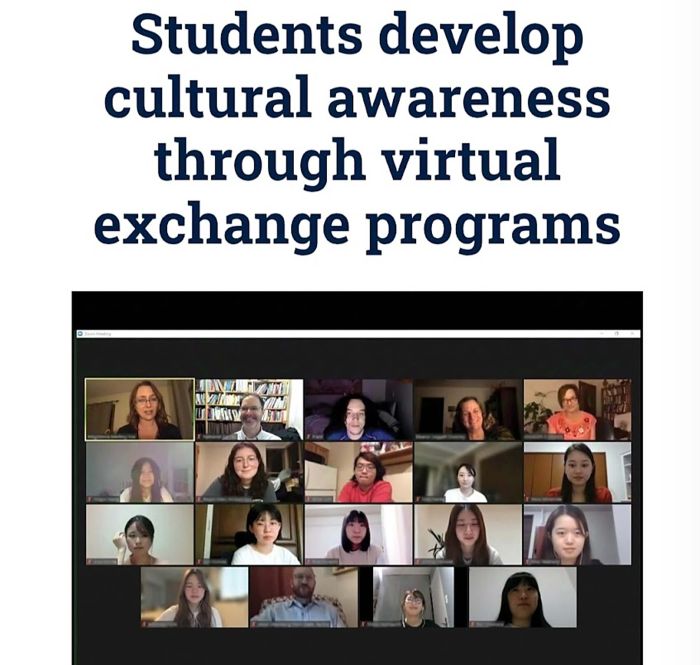
Source: Penn State University
Still, challenges remain. Teachers report learning loss, social delays, and uneven skills, particularly among those who missed hands-on early schooling. For higher ed, this means preparing to welcome students who are digitally skilled but may need added academic or social support to thrive.
4. A Looming Literacy and Learning Crisis
Gen Alpha faces what some experts call a literacy crisis. In 2022, only 33% of U.S. fourth graders were proficient in reading, the lowest rate in decades, down from 37% in 2017. That means two-thirds of 9- and 10-year-olds could not read at grade level, sparking widespread concern. Teachers report capable readers often avoid “complex or extended texts,” gravitating instead toward summaries and short-form content. The pandemic amplified these issues, disrupting early-grade instruction just as foundational skills were developing.
For higher education, this means incoming students may be digitally fluent yet uneven in academic literacy. Colleges will need bridge programs, tutoring, and first-year support to close gaps. Recruitment and communication strategies may also have to evolve, favouring concise text, visuals, and interactive formats better suited to Gen Alpha’s reading habits. At the same time, institutions can play a role in reversing these trends through innovative, tech-enabled literacy initiatives.
Example – New York City’s “NYC Reads” Phonics Initiative: Confronting a worrying drop in reading proficiency, the nation’s largest school district has overhauled how it teaches literacy. In 2023, New York City launched “New York City Reads,” a campaign to put “proven science-of-reading and phonics-based methods” at the core of all elementary instruction. Starting in the 2023–24 school year, every NYC public elementary school must adopt one of a few evidence-based, science-of-reading curricula, replacing the patchwork of programs used previously.
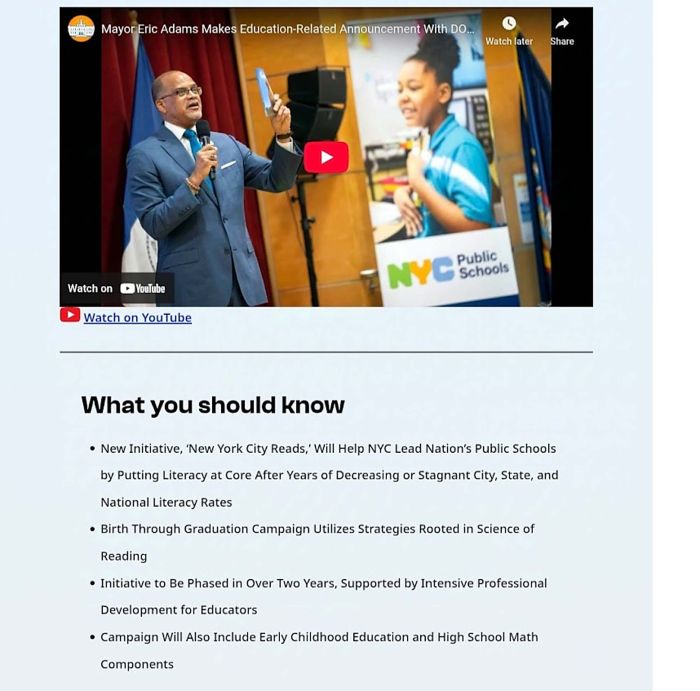
Source: NYC Gov
5. Behavioural and Mental Health Challenges in the Classroom
Teachers often describe Gen Alpha as creative and curious, but also more difficult to manage with traditional classroom discipline. Surveys show that misbehaviour and student morale have worsened since the COVID-19 pandemic, with many children struggling to focus, regulate emotions, or manage anxiety and depression. Some educators even lament that “the bar is the floor” when it comes to classroom readiness, as basic social skills and self-control lag behind earlier cohorts.
A major driver is digital overstimulation. Constant access to screens and instant entertainment has shortened attention spans, making structured, slower-paced classrooms feel tedious. Pandemic disruptions only compounded this problem, fueling apathy and disengagement. Pediatric experts warn that Gen Alpha is at higher risk of ADHD, anxiety, and depression than previous generations.
For higher ed, this means preparing for students who may arrive brilliant with tech but uneven in discipline, resilience, and emotional regulation. Colleges will need robust wellness services, proactive support systems, and learning approaches that balance rigor with engagement.
Example, in the United States, several states have passed laws to ensure students learn about mental health and get support. In 2019, Florida approved a rule requiring at least five hours per year of mental-health instruction for students in grades 6–12. Florida’s policy mandates at least “five hours of required instruction related to mental and emotional health” per year for students in grades 6–12. Lessons include recognizing signs of mental illness, finding help, and developing healthy coping strategies. Other states (such as New York and Virginia) have instituted similar requirements for integrating mental health into health education classes.

Source: St Johns County School District
6. Independent Learners With a Skeptical Eye for Authenticity
Gen Alpha has grown up believing that knowledge is always just a click away. Many already feel that “there is nothing their teacher can teach them that they cannot discover online.” Information is available 24/7 through Google, YouTube, or even AI assistants, and this has fueled both independence and skepticism. They don’t passively accept authority; instead, they cross-check, self-learn, and seek multiple perspectives before forming opinions.
This independence comes with a demand for authenticity. They are wary of polished institutional messaging and are more likely to trust peer voices, reviews, and unfiltered student experiences. For universities, that means transparency will matter more than prestige. Peer-to-peer storytelling, student ambassadors, and honest engagement will resonate far more than glossy brochures.
Example, Lancaster University: In 2020, it engaged its student ambassadors to create content for a digital open-day campaign on TikTok. Students filmed honest, playful snippets about campus life and academics, which the university then used as ads. The result: over 10 million impressions and strong engagement from prospects.
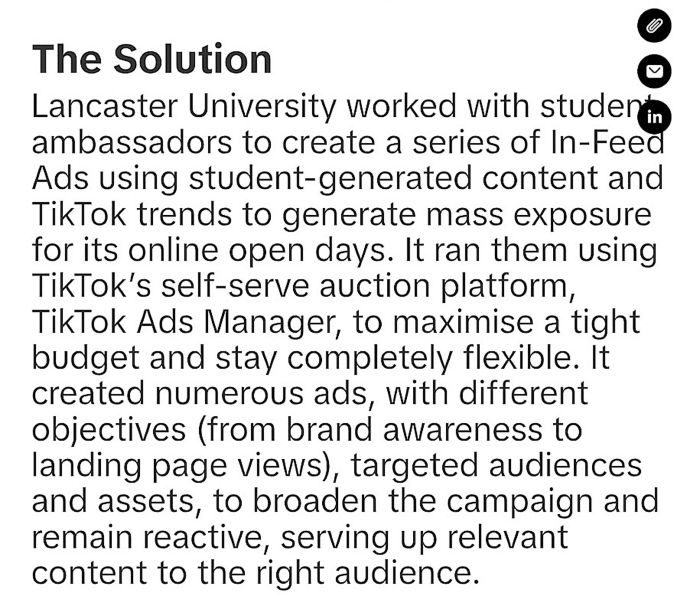
Source: TikTok for Business
7. Values-Driven: Inclusivity, Empathy, and Social Impact Matter
Generation Alpha is growing up in an era defined by both upheaval and progress, from climate change and social justice movements to greater representation in media. As a result, they are emerging as a values-driven cohort that places inclusivity, empathy, and impact at the core of how they see the world.
Research underscores this: Gen Alpha is growing up amid greater diversity and social awareness; U.S. children are increasingly diverse (about a quarter are Hispanic), and this cohort places strong emphasis on inclusion, fairness, and real-world impact. Many are drawn to careers that help the planet or improve lives, and they value authentic representation in media. Family and peer relationships remain central.”
For higher education, the implications are clear. Gen Alpha students will actively seek institutions that live their values, not just promote them. Colleges that demonstrate real commitments to sustainability, equity, and diversity, and that showcase authentic student voices leading these efforts, will stand out. This generation will be drawn to campuses where community, inclusivity, and social responsibility are visible every day.
Example, Connecticut’s Statewide Inclusive Curriculum Law: Gen Alpha’s commitment to inclusion and representation has already influenced legislation. In Connecticut, high school students successfully advocated for a more diverse history curriculum, leading the state to adopt a groundbreaking African American/Black and Puerto Rican/Latino studies requirement. Starting fall 2022, every Connecticut high school must offer an elective course on these communities’ contributions to U.S. history. The change came after students testified that their standard history classes “didn’t reflect their heritage.”

Source: Connecticut State Department of Education
8. New Learning Preferences: Hybrid, High-Tech, and Hands-on
Gen Alpha has grown up in classrooms that blend formats, from traditional to fully remote. They’re highly flexible learners, with many indicating a preference for hybrid models and a minority favouring strictly on-campus courses. Many are open to fully remote learning if it’s engaging and high-quality.
Technology is central to their expectations. Sector surveys report expectations that universities will provide or loan essential devices like laptops or tablets. While 84% own smartphones, many lack personal laptops, highlighting their assumption that institutions will supply what’s needed. Fast Wi-Fi, mobile-first platforms, and seamless online access aren’t perks; they’re the baseline.
Gen Alpha also embraces emerging tech: Many are curious about AI tools (e.g., chatbots) and coding, often exploring these independently; in higher education, pilots increasingly integrate AI into coursework. Combined with their preference for project-based, experiential learning, this signals a need for universities to deliver hybrid, tech-enhanced, and hands-on programs that balance flexibility with meaningful outcomes.
Example, Bowdoin College’s Tech-Equipped, Experiential Learning: In addition to format flexibility, Gen Alpha craves hands-on, tech-enabled experiences. Bowdoin College (USA) exemplifies how institutions are responding on both fronts. Beyond providing every student with a MacBook Pro, iPad mini, and Apple Pencil (to ensure digital access), Bowdoin has invested in what it calls “digital equity…in tools essential for success in the twenty-first century.” All students and faculty have access to course-specific software and creative apps, leveling the field so that a geology major can 3D-model rock formations and an art student can experiment with Adobe Illustrator.
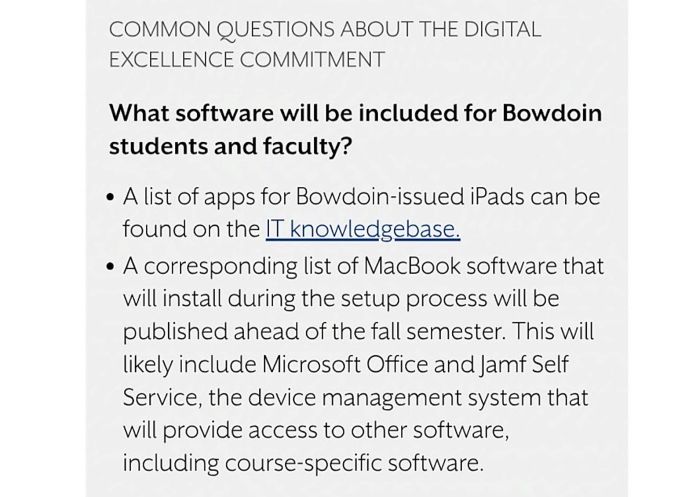
Source: Bowdoin College
9. College on the Radar: High Aspirations, High Expectations
Despite speculation about younger generations skipping college, Gen Alpha shows strong intent to pursue higher education, yet with heightened expectations.
- High Aspirations:Recent surveys indicate strong intent among teens to attend university; at the same time, expectations around flexibility, outcomes, and value are rising. Globally, demographers predict that over half of Gen Alpha will earn a degree, surpassing Gen Z.
- Parental Influence: Raised largely by Millennials, Gen Alpha has absorbed a strong emphasis on education as a pathway to opportunity.
Example: The University of Arizona runs an annual “Arizona Road Trip” program where high school freshmen and sophomores visit campus for a day. The program brings high school freshmen and sophomores to campus for a day, giving an early taste of university life. Such programs are responses to parental interest – surveys by Morning Consult show that about 79% of Gen Alpha parents expect their child to get a four-year degree. Universities are capitalizing on this by expanding outreach to elementary and middle schools as well (STEM camps, coding competitions, etc., for young students).

Source: University of Arizona
- Consumer Mindset: They view education as a service, expecting customization, relevance, and alignment with personal values. Academic reputation and location rank highest in their decision-making, closely followed by career outcomes.
Campus Expectations:
- Tech-forward infrastructure: fast Wi-Fi, device support, smart study spaces, will be assumed, not optional. As one expert cautioned, “You can’t wake up and suddenly fix bandwidth or charging access when the Alpha generation arrives; you have to plan.”
- Flexible learning formats: hybrid classes, online options, and stackable credentials – will matter.
- Outcome-driven opportunities: internships, industry ties, and career development – will weigh heavily.
Bottom Line: Gen Alpha won’t dismiss higher ed; in fact, they’re poised to engage with it more than any previous cohort. But universities must deliver an experience that feels modern, future-focused, and worth the investment.
10. Preparation Is Key: Is Higher Ed Ready for Gen Alpha?
The oldest members of Generation Alpha will begin entering higher education in the late 2020s. That means colleges and universities need to start adapting now. Rising costs, shifting student expectations, and rapid digital change are already reshaping higher ed—and Gen Alpha will accelerate the pace.
Here’s how institutions can prepare:
- Invest in Technology and Infrastructure
- Ensure campus-wide high-speed connectivity, modern IT support, and cybersecurity.
- Provide device support and experiment with AI tutors, adaptive learning platforms, and data analytics.
- Evolve Teaching and Curriculum
- Train faculty in hybrid pedagogy, active learning, and educational tech.
- Update curricula with future-focused topics like AI literacy, digital ethics, and climate change.
Example: MIT’s Experiment with an AI Physics Tutor: At MIT, educators are rethinking course design itself with Gen Alpha’s digital proclivities in mind. In the introductory Physics I course (mechanics), MIT implemented an LLM-based tutor system to assist students with problem-solving practice. Essentially, the instructors developed a custom interface on top of ChatGPT where students can work through physics problems step-by-step, check the correctness of each step, and even request hints or explanations if they get stuck. This tool generates new practice problems on demand and flags any discrepancies between the student’s solution and the expected approach.
- Enhance Student Services and Support
- Expand academic tutoring, bridge programs, and wellness services.
- Train advisors to handle highly informed, skeptical students who will come with detailed questions.
- Foster Authentic Community
- Create avenues for student voice and feedback.
- Build inclusive, peer-driven communities both on-campus and online.
- Communicate Value Clearly
- Provide transparent data on graduate outcomes, alumni impact, and real career pathways.
Bottom line: Gen Alpha could inject creativity, entrepreneurship, and fresh ideas into higher ed. Institutions that start preparing now will be best positioned not only to serve this cohort but also to learn from them and innovate alongside them.
Example: MIT has implemented use cases in several courses where generative AI (LLMs) serve as practice tools or “tutors.” For instance, in their Physics I class, they used AI to provide guided practice problems, discrepancy checks, and support material for students to work through before live problem sessions. This model shows how institutions are integrating AI and digital tools directly into the curriculum to enhance learning, another example of the readiness higher ed will need for Gen Alpha.
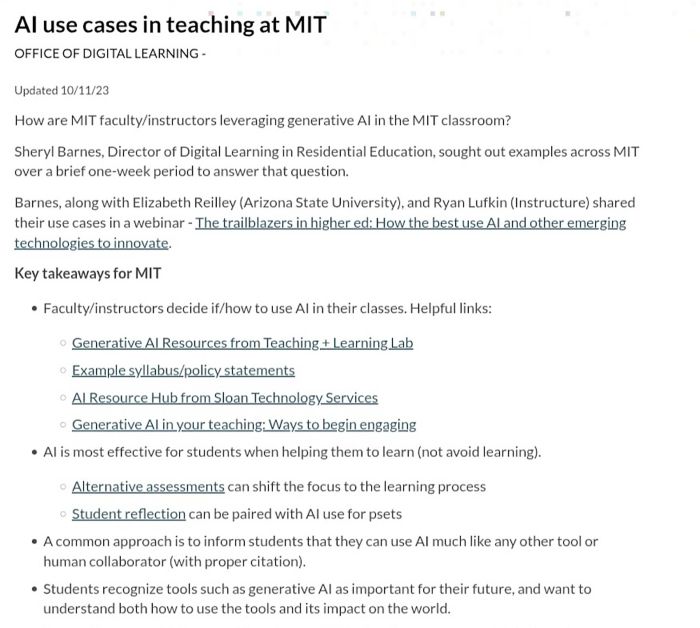
Source: MIT
Meeting Generation Alpha Where They Are
Generation Alpha represents a new beginning for higher education. Born fully into the digital era, shaped by global events like COVID-19, and driven by values of inclusivity, empathy, and social impact, they will arrive on campus with high aspirations and equally high expectations.
Is Gen Alpha harder to teach? They can be challenging to teach with traditional methods, yes. Teachers find that Gen Alpha students often won’t passively sit through lectures or worksheets – their digitally trained brains crave interaction and stimulation. Standard classroom management tactics sometimes falter, as these kids might be less patient and more prone to distraction if not engaged.
Additionally, some arrive in class with weaker basic skills (due to the factors discussed above), making teaching them the usual curriculum harder without remediation. However, “harder to teach” doesn’t mean unable to teach; it means educators must adapt.
For colleges and universities, this means preparation cannot wait. From investing in digital infrastructure and adaptive teaching methods to strengthening student support services and demonstrating authentic values, institutions must begin laying the groundwork now. Gen Alpha will look for education that is flexible, technology-driven, and deeply connected to real-world outcomes.
The encouraging news is that these students are resilient, creative, and eager to make a difference. By embracing innovation and authenticity, higher ed has an opportunity not just to serve them well, but to evolve alongside them, building a learning environment that reflects the future they are poised to shape.
Frequently Asked Questions
Question: What is the learning style of Gen Alpha?
Answer: Gen Alpha students tend to be visual, interactive learners who are comfortable multitasking in digital environments. They often prefer short-form content and videos (having grown up on platforms like YouTube and TikTok) and learn well through gamification and hands-on exploration.
Question: What is the education of the Alpha Generation like?
Answer: Generation Alpha’s educational experience has been distinct. They’ve grown up with personal technology from day one, many using tablets in preschool, and experienced hybrid or remote learning early due to COVID. Generation Alpha education is more personalized and tech-infused than past generations. Gen Alpha students often use online resources (YouTube, learning apps, even AI tools) alongside formal schooling. Going forward, they are expected to be the most educated generation in history, with over half projected to earn university degrees.
Question: Is Gen Alpha harder to teach?
Answer: They can be challenging to teach with traditional methods, yes. Teachers find that Gen Alpha students often won’t passively sit through lectures or worksheets – their digitally trained brains crave interaction and stimulation. Standard classroom management tactics sometimes falter, as these kids might be less patient and more prone to distraction if not engaged.

